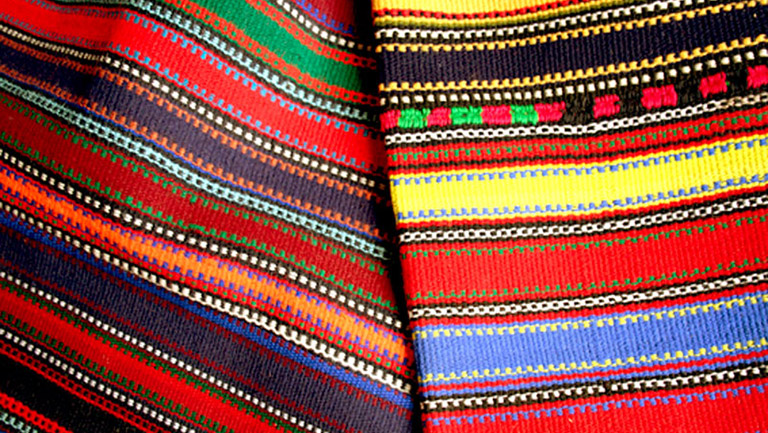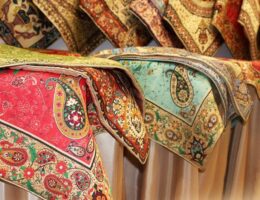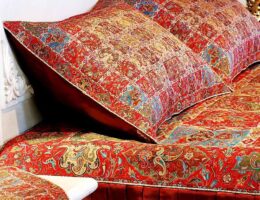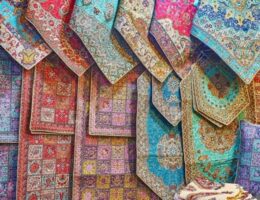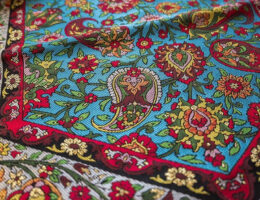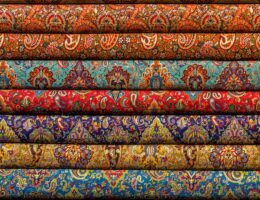IRAN ART EXHIBITION: JAJIM AND RUGS HAVE AN IMPORTANT ROLE IN IRAN’S ARTISTIC PAST
The ancient handicrafts skill of jajim-bafi, which had been almost fallen into oblivion, is planned to be revived in the western province of Ilam, the provincial tourism chief has said.
Jajim is a handwoven rug that is thick and has no lint, made of wool and cotton with long wrapping and stripped and colorful pattern.
Depending on the allocated budget, different jajim-bafi training courses will be held next year to promote this field, CHTN quoted Abdolmalek Shanbehzadeh as saying on Tuesday.
Moreover, the province’s Cultural Heritage, Tourism, and Handicrafts Department aims to make documentaries on jajim-bafi and grant permissions for individuals and workshops in this field, the official added.
Home to almost half of Iran’s UNESCO sites, western Iran is a land of hospitable people, wild extremes, and wilder history, and it may be an independent traveler’s adventure playground. The region also witnessed the rise and fall of many great empires once bordering Mesopotamia, Ottoman Turkey, and Czarist Russia.
From the fecund Caspian coast to the stark, mountainous northern borders, and the crumbling desert ruins of the southern plains, the region hosts everything from paddy fields to blizzards to Persian gardens.
With 14 entries, Iran ranks first globally for the number of cities and villages registered by the World Crafts Council, as China with seven entries, Chile with four, and India with three ones come next.
In January 2020, the cities of Shiraz, Malayer, and Zanjan and the village of Qassemabad were designated by the WCC- Asia Pacific Region, putting Iran’s number of world crafts cities and villages from ten to 14.
The country’s handicrafts exports slumped during the mentioned months in comparison to the same period last a year earlier due to the damage the coronavirus pandemic has inflicted on global trade.
The Islamic Republic exported $427 million worth of handicrafts during the first eleven months of the calendar year 1398. Of the figure, some $190 million was earned via suitcase trade (allowed for customs-free and tax-free transfer) through 20 provinces, according to data compiled by the Ministry of Cultural Heritage, Tourism and Handicrafts.
IRAN ART EXHIBITION: Jajims are a type of handcrafted rug, usually woven from cotton or wool, and recognised by their vertical stripe patterns that give them a rainbow-like appearance. Unlike other kinds of rugs and carpets, weaving on horizontal looms is easier due to its speed and practicality. Horizontal looms and cheaper material make them more affordable and budget-friendly than carpets. Jajims are usually woven in square outlines and are smaller than carpets. Jajim’s are the perfect souvenirs due to their convenient size and price.
Traditional Usage
Iranians used Jajims in so many ways. You could say that Jajims are a multi-purpose rug.
At first they were used as bed covers. Later they became a key part of a famous winter heater known as korsi (kor-si).
Korsi’s are typically low-level tables with a heaters underneath (usually a charcoal brazier). Blankets are thrown on top and over the table, flowing onto the floor, insulating the hot air inside. People would sit beside their korsi, putting their feet under the blankets to get warm. However, long before the introduction of blankets, it was Jajims that provided the insulation.
Thicker Jajims were also used as saddles while thinner ones were utilized for decoration and luxury. Jajims are exactly like violins and bows: rough and coarse to touch at first, but soon softend after frequent use.
Modern Usage
In modern years, Jajims have been through some changes in application. Their cheerful, unique and sharp colors have changed modern interior design. Modern design is all about simplicity and harmony. Think about how lovely a neutral-colored couch would look set on top of a vibrant and contrasting jajim floor rug.
Jajims can even be found on cushions, stools and even benches. You can also frame an antique Jajim and enjoy it on your wall. Overall, they bring a lot of love and energy to any modern home.
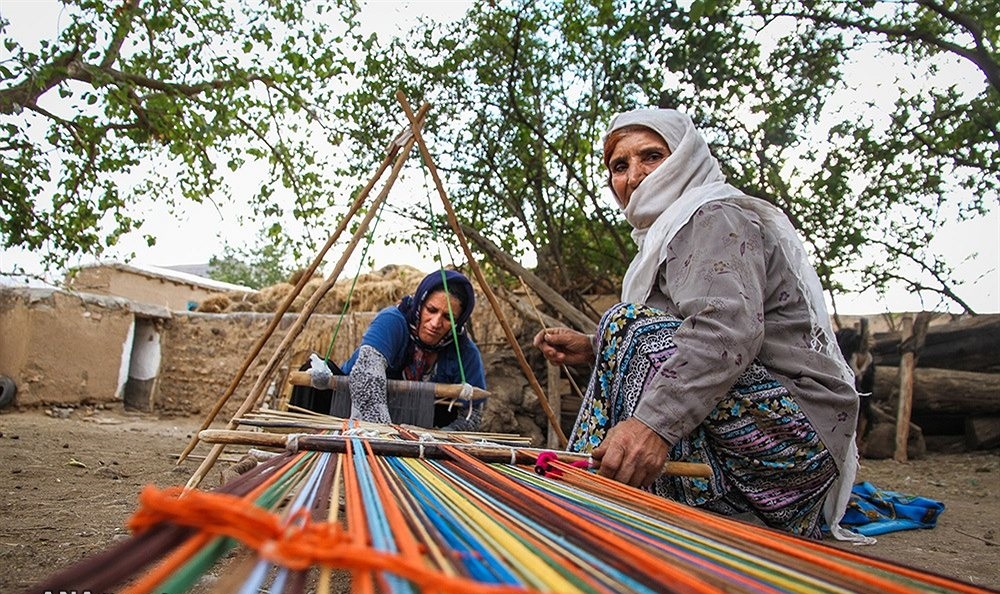
IRAN ART EXHIBITION: Khalkhal is considered one of the important handicraft centers of Ardebil province and also Iran. The most prominent handicraft product of this region is weaving Jajim. Jajim is a handwoven product usually with strip, diamonds and colorful designs. In past, Jajims were used as Korsi (a low table with heater underneath) covers. In addition, they were used to wrap beddings or “Jaye khab”. That is why they are also known as “Jay-e Jam’e” which means “bedding wraps” and gradually turned into Jajim. Jajim wraps are made of colorful wools and occasionally colorful silks are used as wraps, too. But they are not used as wefts because black or gray are not used. To weave a piece of Jajim, two or three professional and skillful masters are needed. The first step is to stretch the wraps in an open space. Since spaces linger than fifteen meters are rarely found in village homes, the Jajim loom are usually set up in public passages like alleys and squares. This step is called “Deraz kardan e Jajin” or stretching the Jajim. When no one is working on the Jajims, the looms and the tripod are stacked up and they easily stretched again. Then, by using a wooden bar, a number of wraps are separated. That is when the weaving can be started.
A Jajim has usually ten to fifteen meters long and has a width of fifteen to twenty-five centimeters. After one piece is finished, they are cut and sewed to another one to make a piece of Jajim in the desired size. If yarns of Jajim are produced from high-quality material, then it will be easier for the weaver to do his part. In the region of Khalkhal, making Jajims is considered a seasonal activity. The weavers take up making Jajims only in winter when they are less busy with agriculture or animal husbandry. Some of the Jajim patterns in rural region of Khalkhal are: “Julma”, “Sirgha”,”Gachi Diztaghi”,”Ahrami”, “Uzig Ghashi”, “Pichagh Uju”, “Hemian”, “Sadeh Takhtehi”, “Bali Bughma”, and “Badami”. Jajim products can be used in floor coverings, doormat, prayer rugs, beddings, Korsi covers, and sofa covers. They are also used as complementary material for leather crafts.
